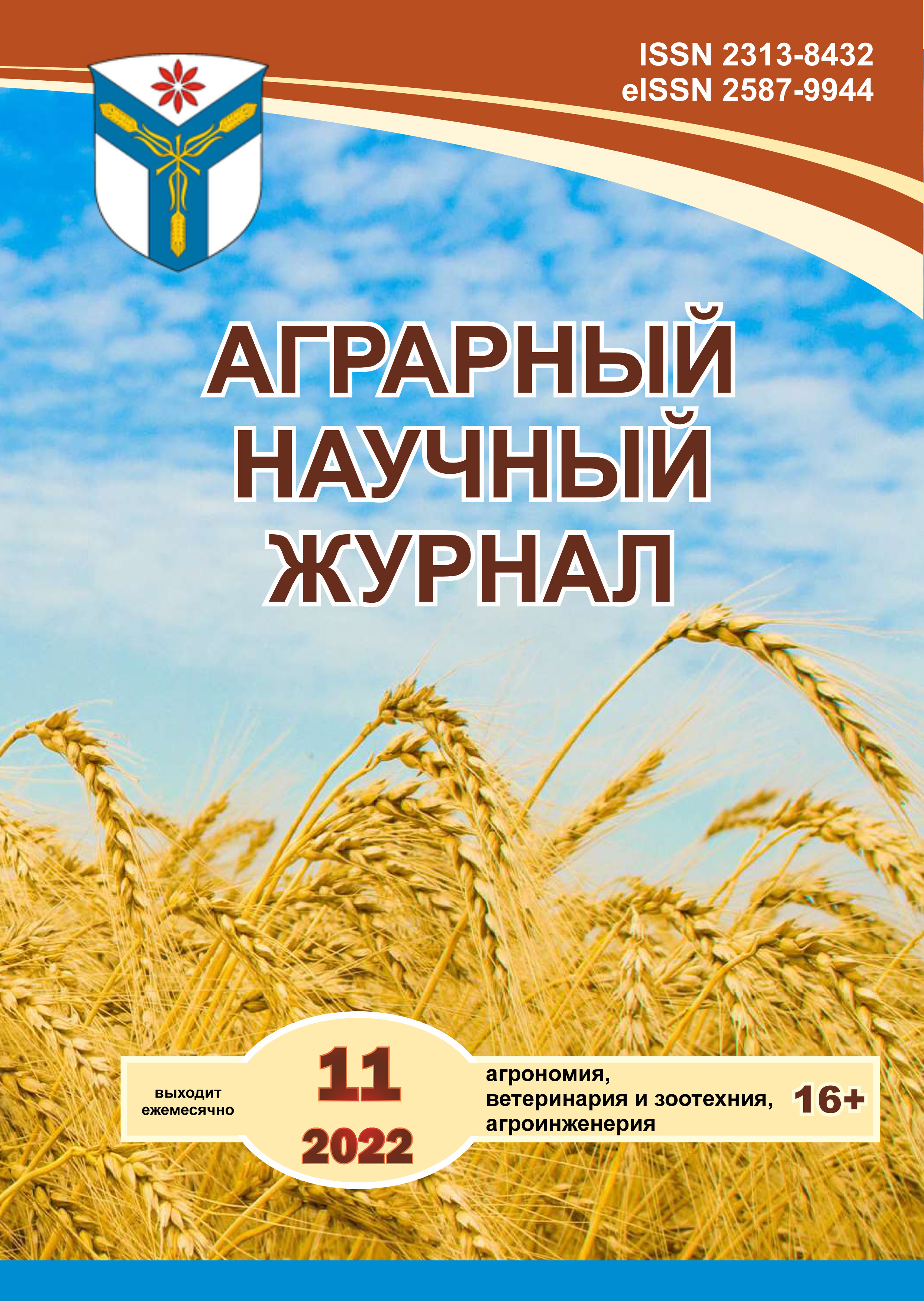Amino acid analysis of muscle tissue of walleye and pike of the Volgograd reservoir
DOI:
https://doi.org/10.28983/asj.y2022i11pp68-70Keywords:
natural conditions, Volgograd reservoir, pike perch, pike, muscle tissue, amino acid analysisAbstract
The purpose of our study is to analyze the data on the amino acid composition of the muscle tissue of common walleye and common pike obtained in the natural conditions of the Volgograd reservoir and to establish their nutritional value for the human body. The data obtained indicate that the quantitative and qualitative composition of amino acids of the muscle tissue of hydrobionts is similar; there is a general high content of glutamic and aspartic acids, arginine, lysine, isoleucine and leucine. The total number of proteinogenic amino acids exceeds the muscle tissue of walleye by 15.58%. It is also noted that the composition of the muscle tissue of the pike perch includes the largest amount of essential amino acids. The content of cystine and histidine in the studied samples is the least in terms of quantity. The natural nutrition of pike and pike perch is not balanced enough in terms of the content of high-grade protein, but it is enough for the growth of fish in the conditions of the Volgograd reservoir. Under natural conditions, pike perch and pike did not receive the amino acid valine in their diets. The biological value of the protein of the muscle tissue of the common pike is 1.43% higher compared to the muscle tissue of the common pike perch.
Downloads
References
Китаев И. А., Васильев А. А., Гусева Ю. А. Влияние кормовых добавок «Абиопептид» и «Ферропептид» на аминокислотный состав белка мышечной ткани ленского осетра при выращивании в УЗВ // Актуальные проблемы ветеринарной медицины, пищевых и биотехнологий: материалы Всерос. науч.-практ. конф. Саратов, 2015. С. 160–164.
Кузнецов В. А. Количественный учет молоди рыб в водохранилищах и озерах (методические подходы и возможности) // Типовые методики исследования продуктивности видов рыб в пределах их ареалов. Вильнюс, 1985. Ч. 5. С. 26–35.
Методические указания по оценке численности рыб в пресноводных водоёмах. М., 1990. 51 с.
Тарчоков Т. Т., Максимова В. И., Юлдашбаев Ю. А. Генетика и биотехнология: учеб.-практ. пособие. М.: КУРС: ИНФРА-М, 2016. 112 с.
Finn R. N., Fyhn Н. J. Requirement for amino acids in ontogeny of fish // Aquae. Res. 2010. No. 41. 684–716 p.
The relationship between introducing pancreatic hydrolysate of soy protein into the diet and the amino acid content in the muscle tissue of rainbow trout / Yu. A. Guseva et al. // Journal of Pharmaceutical Sciences and Research. 2018. Vol. 10 (12). P. 3330–3332.
Kaushik S. J., Seiliez I. Protein and amino acid nutrition and metabolism in fish // Aquae. Res. 2010. No. 41. 322–332 p.
Portz L., Cyrino J. Comparison of the amino acid contents of roe, whole body and muscle tissue and their A/E ratios for largemouth bass Micropterussalmoides (Lacep&le, 1802) // Aquae. Res. 2003. Vol. 34. No. 3. 585–592 p.
Downloads
Published
Issue
Section
License
Copyright (c) 2022 The Agrarian Scientific Journal

This work is licensed under a Creative Commons Attribution-NonCommercial-NoDerivatives 4.0 International License.








